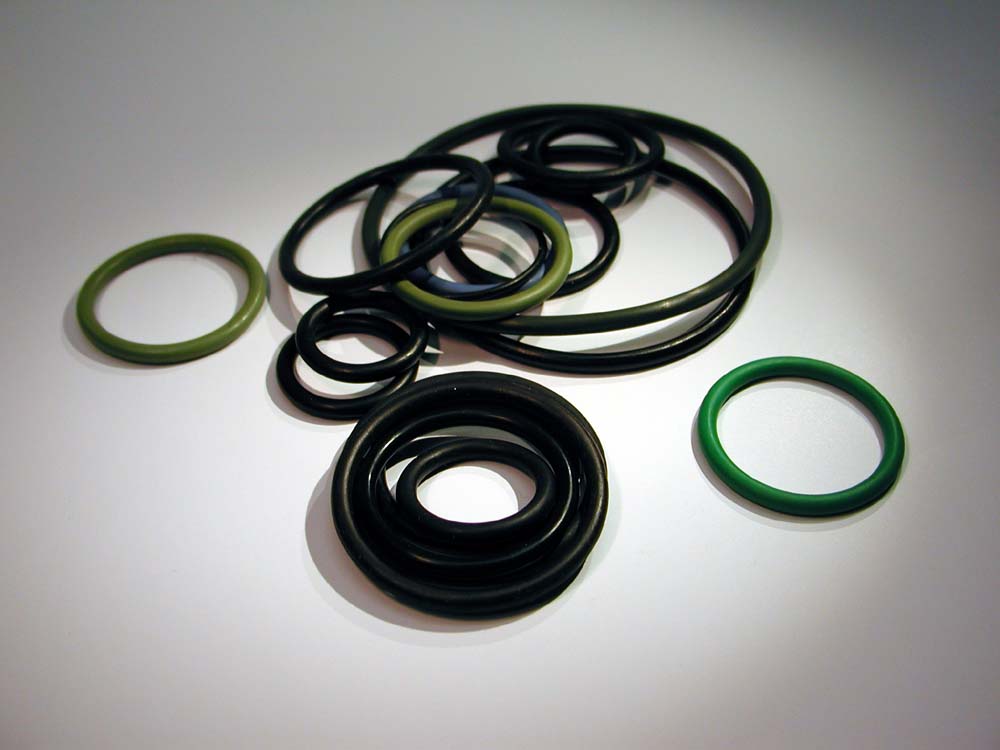All mechanisms with a hydraulic system are necessarily equipped with O-rings. Thanks to such products, the complete tightness of the existing connections can be ensured. O-rings close gaps, prevent fluids from flowing, and even relieve pressure between details to a certain degree. You may need to purchase an o-ring set for a variety of reasons. It is necessary to choose a specific version of such products according to their further use. O-Rings are often found in gas and water supply systems. Stop valves and pipe fittings cannot function without them as well. Seals are mandatory for hydraulic applications with moving parts.
The O-ring, a seemingly modest circular seal, holds a significant role in various engineering applications. This versatile component, often made from rubber or other elastomers, acts as a sealant to prevent leaks in systems where liquids or gases are present. Its simple yet effective design allows it to withstand pressure, temperature variations, and chemical exposure, making it a crucial element in hydraulic systems, engines, and even everyday products like faucets. The O-ring’s ability to create a reliable, impermeable seal is paramount in industries ranging from aerospace to manufacturing. Its unassuming appearance belies its vital function, showcasing how even the smallest components play a substantial role in the intricate machinery that powers our modern world.
Materials Used To Make O-Ring
O-rings can be made of different materials. Usually, it is leather, rubber, polyurethane, silicone, or synthetic rubber. The shape of the o-ring can be different – rectangular, chevron, oval, or round. Fixed joints can also be sealed using such products. For them, special recesses are often provided. The O-ring should fit as tightly as possible since this is the only way to guarantee tightness. The choice of material for the manufacture of sealing rings largely depends on the working fluid and its properties. Natural rubber, for example, cannot come into contact with hydraulic fluid. It will quickly collapse due to the petroleum products that are used in its manufacture. At the same time, synthetic rubber will withstand such an aggressive effect without any problems, so you can use an oring made of it. To choose the most appropriate O-ring, you should understand the scope of its application and the accuracy class. The important information that characterizes the product is the data on the manufacturer and the item number.
Purpose Of Using O-Ring
The purpose of using o-ring is to eliminate the occurrence of gaps in various devices. It can be either hydraulic or pneumatic, lubricating, or fuel. It is often made of rubber, which in turn, is of different types in terms of temperature resistance. Nowadays, there is not only a type of “rubber sealing ring,” but other heat-resistant materials are also used for the manufacture of such products:
- silicone rubber;
- polyurethane;
- fluoroplastic;
- fluoroelastomer (often with polymer additives)
O-Rings: Accuracy Groups
In auto mechanisms, connections can be movable and static. The seals will also differ in purpose. The o-ring can be for fixed and movable joints or exclusively for movable ones. When choosing the o-ring, take into account that nomenclature pointers are different. It all depends on whether a domestic or an import manufacturer is engaged in their production. So, make sure your choice is right and the o-ring will fit perfectly for the purpose it should be used. An example is the Aflas 80 Durometer O Ring 005. This is a very popular product.
Overview
An O-ring is a circular sealing device made of elastomeric material, commonly used to prevent the leakage of fluids and gases in mechanical systems. O-rings are designed to withstand a range of temperatures and pressures, and they can be used in a variety of applications, including aerospace, automotive, medical, and industrial settings.
How to Choose the Most Appropriate O-Ring?
When choosing the most appropriate O-ring, there are several factors to consider, including the material, size, and application. Here are some guidelines to help you choose the right O-ring for your needs:
- Material The material of the O-ring is the most important factor to consider. Different materials have different chemical resistances, temperature ranges, and mechanical properties. Some of the most common materials used for O-rings include:
- Nitrile rubber (NBR)
- Fluorocarbon (FKM)
- Silicone (VMQ)
- Ethylene propylene diene monomer (EPDM)
- Polyurethane (PU)
- Size The size of the O-ring is another crucial factor to consider. O-rings come in a range of sizes, and choosing the right size is essential for ensuring proper sealing. Measure the groove where the O-ring will fit to determine the correct size.
- Application The application of the O-ring is also important to consider. Different applications require different types of O-rings. Consider factors such as temperature, pressure, chemical compatibility, and the type of fluid or gas being sealed.
Final word
O-rings are one of the simplest and most common seal types for various static and dynamic applications. The tendency of an o-ring to return to its original shape when being compressed is one of the main reasons an o-ring provides excellent sealing. The most common type of sealing parts is round, but both x-shaped and rectangular products are used. The purpose of the O-rings can be different. Usually, those products are chosen that can withstand chemical environments, have sufficient rigidity and elasticity, and are resistant to heat and cold. All these characteristics are obtained by supplementing various types of rubber with special additives. Remember that when choosing O-rings, you must also pay attention to their size and nomenclature.
Apart from this, if you are interested to know about “ Laravel PHP Framework” then visit our Technology category.


